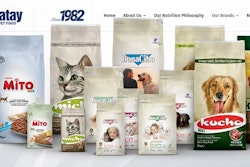
To connect with consumers today, brands – especially those in categories like pet food, where consumers have a strong emotional investment – need to tell their story. This is true for human food brands, too; in fact, Innova Market Insights has named “storytelling: winning with words” as its top human food trend for 2020.
Lu Ann Williams, director of insights & innovation for Innova, presented the market research firm’s annual top 10 trends list in a recent webinar. In discussing the storytelling trend, she said that according to Innova surveys, 56% of consumers from several countries around the world say the stories around brands influence their food purchasing decisions. (She characterized these as global consumers, but then specified the data was based on an average of consumers from the U.K., U.S., Spain, France, Brazil, India, Germany, Mexico and China.)
Plants, sustainability, customization and, always, ingredients
Other 2020 human food trends identified by Innova that might have insights and ties to pet food include:
The plant-based revolution. Regarding pet food, this one may seem rather ironic, given the current concerns over legumes and similar ingredients in grain-free pet foods very thinly linked to canine dilated cardiomyopathy. Yet considering how cyclical trends and situations are – who would have thought just two years ago that grain-free pet foods would be demonized? – The emphasis on plants in human foods will likely influence pet food again at some point.
“Plant-based has been gathering steam for about six years and now it’s really hitting its mainstream stride,” Williams said in an interview with FoodIngredientsFirst.com. “I am probably most excited about the possibility of hybrids because this gives all consumers a way to participate in the trend.”
The sustain domain. In just one year, from 2018 to 2019, the percentage of consumers from those nine countries listed above who say they expect companies to invest in sustainability jumped from 68% to 87%, Williams said. Innova’s surveys also show that nearly 50% say they’re willing to pay more for products with less plastic packaging or ones aimed at combating food waste, such as with upcycled products as ingredients.
Macronutrient makeover. This trend seems geared toward ingredient label claims and how they evolve over time based on science and new information becoming available. As examples in human food, Williams pointed to sugar as the “big demon” now, with fiber making a comeback. In pet food, again, think grains and legumes.
A star is born. In the webinar, Williams touched on ingredients several times, including with storytelling, where ingredient provenance is a significant story resonating with consumers. Yet this trend specifically addresses ingredients, particularly novel ones, as the platform of products. “Consumer familiarity and acceptance are crucial for mainstreaming unusual ingredients,” she said. Examples of ones becoming more familiar and accepted include probiotics, now approaching mainstream status, and CBD. Both examples apply to pet food, too.
“Mass market customization.” Actually, this is not one of the trends identified by Innova, but it plays a significant role in two on the list: hello hybrids and brands unlimited. And it seems particularly pertinent to pet food, as more consumers turn to companies specializing in customized dog or cat foods (and more of those companies appear).
With human foods, the hybrids trend refers to products like new versions of Coca-Cola that allow adventurous consumers to try something really new and different that perhaps the majority of people wouldn’t be willing to try. The brands unlimited trend is about limited-edition, limited-release products, such as chocolates with flavors specified by consumers. Innova’s surveys show that two of five consumers say they’d “love to design” their own limited-edition product.
Innova’s other top 10 trends for 2020 are the right bite (about mental well-being), tapping into texture and eat pretty (products with both nutritional and cosmetic benefits).
Overall consumer trends for 2020 and beyond
This time of year, other market research firms, like Mintel, also get in on the act of forecasting trends for the coming year. Actually, Mintel is looking out even farther, five and 10 years ahead, at how seven drivers of consumer behavior will shape global markets.
Like Innova, Mintel also named well-being and sustainability (though they called it surroundings). But two other drivers – technology and value – are unique to Mintel’s list and will shape the pet food market, too, I believe. Technology, for example, offers potential to help tackle pet obesity and owner education about nutrition and pet food, and also forms the foundation for research into pets’ genomes and microbiomes, which are very closely tied to nutrition.
Value pertains to consumers seeking a “more mindful approach to their spending,” Mintel said, as well as unique and authentic things. In my mind, it also links to pet owners focusing more on value in what they spend on pet food and other products, ensuring their pets get the best nutrition possible at a price that doesn’t bust the monthly budget. Trends like the mass premiumization of pet food play right into this.
The other drivers highlighted by Mintel are rights, identity and experiences.


















